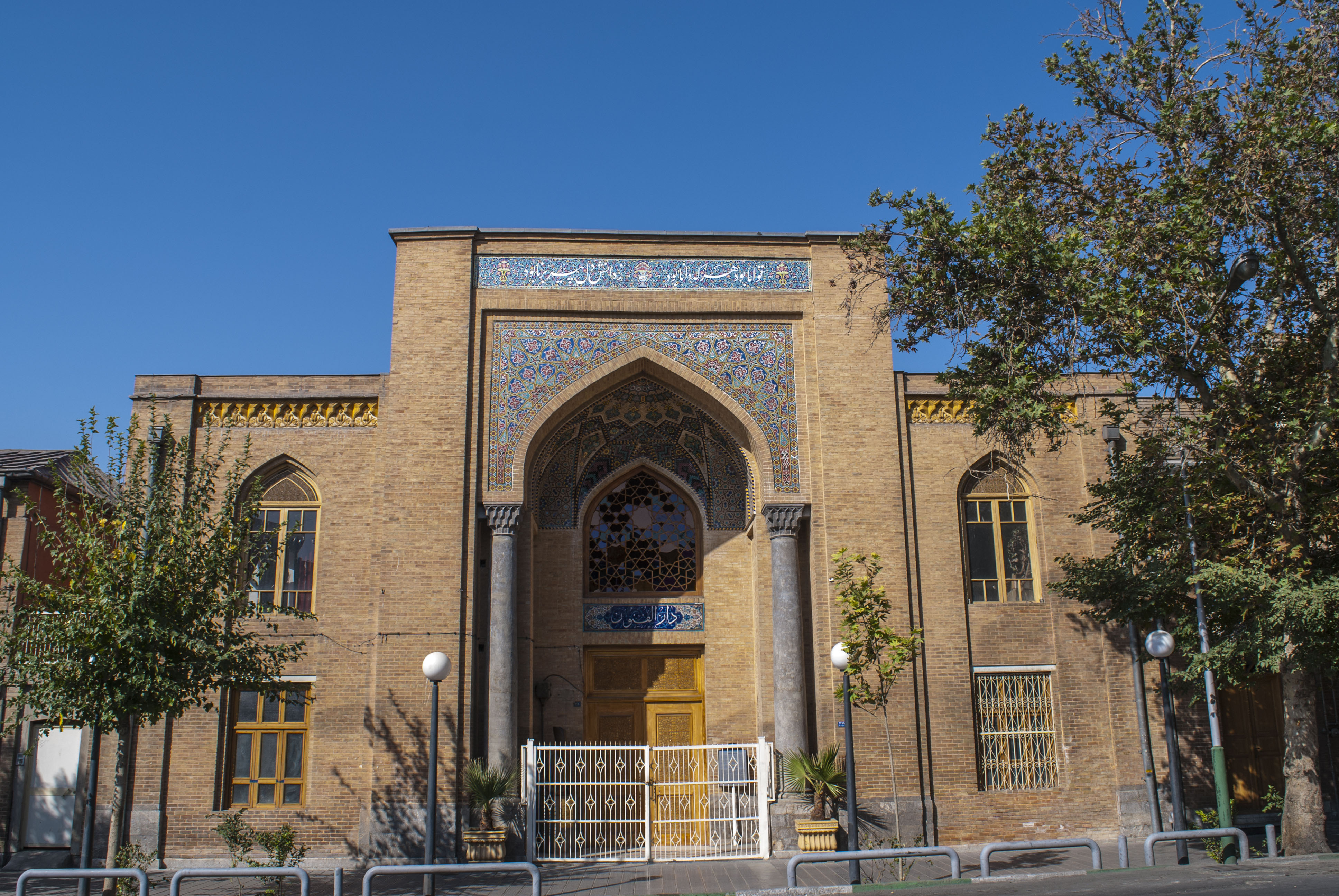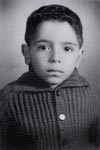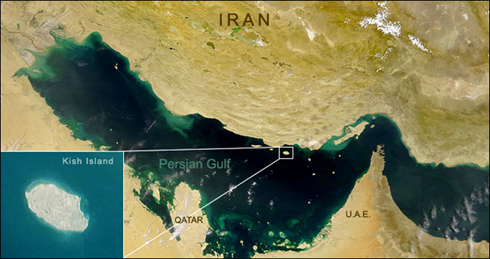|
Shanbezadeh Ensemble
The Shanbehzadeh Ensemble ( fa, گروه شنبه زاده) is an Iranian folk band, formed in Bushehr in 1990. The band offers a rare aspect of the traditional music and dance of the Persian Gulf, more specially of the province of Bushehr, south of Iran and bordering Persian gulf. The principal instruments of the ensemble are the ( bagpipe), (flute), (drum), ( percussion), traditional flute, (cymbal) and (a goat’s horn). The ensemble has performed in front of audiences in Iran, Europe and North America. History The band was founded by internationally acclaimed Iranian musician and dancer, Saeed Shanbezadeh in 1990. Saied, who traces his ancestry to Zanzibar in East Africa, was born in Bushehr, Iran, where he started playing music at the age of 7 with the old masters of the music of the region. He began with percussions, singing, and traditional dance. At 20 he founded the group of Shanbehzadeh Ensemble and won the 1st prize at the Fajr Music Festival in Tehran in ... [...More Info...] [...Related Items...] OR: [Wikipedia] [Google] [Baidu] |
Bushehr
Bushehr, Booshehr or Bushire ( fa, بوشهر ; also romanised as ''Būshehr'', ''Bouchehr'', ''Buschir'' and ''Busehr''), also known as Bandar Bushehr ( fa, ; also romanised as ''Bandar Būshehr'' and ''Bandar-e Būshehr''), previously Antiochia in Persis ( grc, Ἀντιόχεια τῆς Περσίδος, Antiócheia tês Persídos) and Bukht Ardashir, is the capital city of Bushehr Province, Iran and a port city in south of Iran. At the 2006 census, its population was 161,674, in 40,771 families. Bushehr lies in a vast plain running along the coastal region on the Persian Gulf coast of south-western Iran. It is built near the ancient port city of Rishahr (Sassanian, Riv Ardasher). It was the chief seaport of the country and is the administrative center of its province. Its location is about south of Tehran. Bushehr has a Desert climate#Hot desert climates, desert climate. Bushehr was the main trade center of Iran in the past centuries. The city structures are traditional ... [...More Info...] [...Related Items...] OR: [Wikipedia] [Google] [Baidu] |
Fajr International Music Festival
Fajr International Music Festival ( fa, جشنوارهٔ موسیقی فجر) is Iran's most prestigious Music Festival founded in 1986. The festival is affiliated with UNESCO and includes national and international competition sections. Since its establishment, many musicians from several countries like Austria, Germany, France participated in the event. The festival have enjoyed a strong presence of Asian countries as well. The 22nd Fajr International Music Festival was held in January 2007. The annual event was attended by 1,200 domestic and foreign artists performing different pieces in various categories International and Folk Music, Classical Music and Youth and Women Music. A total of 126 performances were made during the 10-day festival. 27th Festival Winners of Music Composition Section *Leyli Mohammad Nosrati for Suite Symphony *Hamid Moradian for Mooye Kamancheh Winners of Choir Competitive Section *Damour Vocal Band Led by Faraz Khosravi Danesh *Avaye Mahan Group Le ... [...More Info...] [...Related Items...] OR: [Wikipedia] [Google] [Baidu] |
Music Of Iran
The music of Iran encompasses music that is produced by Iranian artists. In addition to the traditional folk and classical genres, it also includes pop and internationally celebrated styles such as jazz, rock, and hip hop. Iranian music influenced other cultures in West Asia, building up much of the musical terminology of the neighboring Turkic and Arabic cultures, and reached India through the 16th-century Persianate Mughal Empire, whose court promoted new musical forms by bringing Iranian musicians. History Earliest records Music in Iran, as evidenced by the "pre-Iranian" archaeological records of Elam, the oldest civilization in southwestern Iran, dates back thousands of years. Iran is the birthplace of the earliest complex instruments, which date back to the third millennium BC. A number of trumpets made of silver, gold, and copper were found in eastern Iran that are attributed to the Oxus civilization and date back between 2200 and 1750 BC. The use of both vertical and ... [...More Info...] [...Related Items...] OR: [Wikipedia] [Google] [Baidu] |
Persian Traditional Music
Persian traditional music or Iranian traditional music, also known as Persian classical music or Iranian classical music, refers to the classical music of Iran (also known as ''Persia''). It consists of characteristics developed through the country's classical, medieval, and contemporary eras. It also influenced areas and regions that are considered part of Greater Iran. Due to the exchange of musical science throughout history, many of Iran's classical modes are related to those of its neighboring cultures. Iran's classical art music continues to function as a spiritual tool, as it has throughout history, and much less of a recreational activity. It belongs for the most part to the social elite, as opposed to the folkloric and popular music, in which the society as a whole participates. However, components of Iran's classical music have also been incorporated into folk and pop music compositions. History The history of musical development in Iran dates back thousands of years ... [...More Info...] [...Related Items...] OR: [Wikipedia] [Google] [Baidu] |
Rakhshān Banietemad
Rakhshān Banietemad ( fa, رخشان بنیاعتماد; born April 3, 1954 in Tehran, Iran) is an internationally and critically acclaimed Iranian film director and screenwriter who is widely considered a premier female director and her films have been praised at international festivals as well as being popular with Iranian critics and audiences. Her title as "First Lady of Iranian Cinema" is not only a reference to her prominence as a filmmaker, but also connotes her social role of merging politics and family in her work. Her signature style is that she focuses on a character that is the representation of a part of the society in order to explore it while staying objectively neutral. The first period of Banietemad's cinematic activity originates from a kind of dark humor, but in the second period of her work, dark humor gives way to serious and influential films, and deeper and broader issues are addressed. Banietemad has a more realistic view of life. She excels in represe ... [...More Info...] [...Related Items...] OR: [Wikipedia] [Google] [Baidu] |
Bahram Beyzai
Bahrām Beyzāêi (also spelt Beizāi, Beyzāêi, fa, بهرام بیضائی; born 26 December 1938) is an Iranian playwright, theatre director, screenwriter, film editor, and '' ostād'' ("master") of Persian letters, arts and Iranian studies. Beyzaie is the son of the poet Ne'matallah Beyzai (best known by his literary pseudonym "Zokā'i"). The celebrated poet Adib Beyzai, known as one of the most profound poets of 20th-century Iran, is Bahram's paternal uncle. Bahram Beyzaie's paternal grandfather, Mirzā Mohammad-Rezā Ārāni ("Ebn Ruh"), and paternal great-grandfather, the mulla Mohammad-Faqih Ārāni ("Ruh'ol-Amin"), were also notable poets. In spite of his somewhat belated start in cinema, Beyzai is often considered a pioneer of a generation of filmmakers whose works are sometimes described as the Iranian New Wave. His ''Bashu, the Little Stranger'' (1986) was voted "Best Iranian Film of all time" in November 1999 by a Persian movie magazine ''Picture World'' poll of ... [...More Info...] [...Related Items...] OR: [Wikipedia] [Google] [Baidu] |
Mohsen Makhmalbaf
Mohsen Makhmalbaf ( fa, محسن مخملباف, ''Mohsen Makhmalbaaf''; born May 29, 1957) is an Iranian film director, writer, film editor, and producer. He has made more than 20 feature films, won some 50 awards and been a juror in more than 15 major film festivals. His award-winning films include ''Kandahar''; his latest documentary is '' The Gardener'' and latest feature '' The President''. Makhmalbaf's films have been widely presented at international film festivals in the past ten years. The director belongs to the new wave movement of Iranian cinema. ''Time'' selected Makhmalbaf's 2001 film ''Kandahar'' as one of the top 100 films of all time. In 2006, he was a member of the Jury at the Venice Film Festival. Makhmalbaf left Iran in 2005 shortly after the election of Mahmoud Ahmadinejad, and has lived in Paris since the events of the 2009 Iranian presidential election. Life Makhmalbaf was born in Tehran on May 29, 1957. At the age of 15, he became involved in a milita ... [...More Info...] [...Related Items...] OR: [Wikipedia] [Google] [Baidu] |
University Of Toronto
The University of Toronto (UToronto or U of T) is a public research university in Toronto, Ontario, Canada, located on the grounds that surround Queen's Park. It was founded by royal charter in 1827 as King's College, the first institution of higher learning in Upper Canada. Originally controlled by the Church of England, the university assumed its present name in 1850 upon becoming a secular institution. As a collegiate university, it comprises eleven colleges each with substantial autonomy on financial and institutional affairs and significant differences in character and history. The university maintains three campuses, the oldest of which, St. George, is located in downtown Toronto. The other two satellite campuses are located in Scarborough and Mississauga. The University of Toronto offers over 700 undergraduate and 200 graduate programs. In all major rankings, the university consistently ranks in the top ten public universities in the world and as the top university ... [...More Info...] [...Related Items...] OR: [Wikipedia] [Google] [Baidu] |
Ethnomusicology
Ethnomusicology is the study of music from the cultural and social aspects of the people who make it. It encompasses distinct theoretical and methodical approaches that emphasize cultural, social, material, cognitive, biological, and other dimensions or contexts of musical behavior, in addition to the sound component. Within musical ethnography it is the first-hand personal study of musicking as known as the act of taking part in a musical performance. Folklorists, who began preserving and studying folklore music in Europe and the US in the 19th century, are considered the precursors of the field prior to the Second World War. The term ''ethnomusicology'' is said to have been coined by Jaap Kunst from the Greek words ἔθνος (''ethnos'', "nation") and μουσική (''mousike'', "music"), It is often defined as the anthropology or ethnography of music, or as musical anthropology.Seeger, Anthony. 1983. ''Why Suyá Sing''. London: Oxford University Press. pp. xiii-xvii. Du ... [...More Info...] [...Related Items...] OR: [Wikipedia] [Google] [Baidu] |
Tombak
The ''tombak'' (Persian: تمبک), ''tonbak'' (تنبک), or ''zarb'' (ضَرب) is an Iranian goblet drum. It is considered the principal percussion instrument of Persian music. The tombak is normally positioned diagonally across the torso while the player uses one or more fingers and/or the palm(s) of the hand(s) on the drumhead, often (for a ringing timbre) near the drumhead's edge. Sometimes, tombak players wear metal finger rings for an extra-percussive "click" on the drum's shell. Tombak virtuosi often perform solos lasting ten minutes or more. Description The tombak is a single-headed goblet drum is about 18 inches in height with a 28 centimetre diameter head. Its shell is carved from a single block of (sometimes highly figured, knotted or marbled) wood, maybe with a carved design or geometric pattern (such as furrows, flutes, diamonds and/or spirals—it is often a costly, heirloom-type or vintage musical instrument). At the bottom the shell is somewhat thicker tha ... [...More Info...] [...Related Items...] OR: [Wikipedia] [Google] [Baidu] |
Bahram Beyzaei
Bahrām Beyzāêi (also spelt Beizāi, Beyzāêi, fa, بهرام بیضائی; born 26 December 1938) is an Iranian playwright, theatre director, screenwriter, film editor, and '' ostād'' ("master") of Persian letters, arts and Iranian studies. Beyzaie is the son of the poet Ne'matallah Beyzai (best known by his literary pseudonym "Zokā'i"). The celebrated poet Adib Beyzai, known as one of the most profound poets of 20th-century Iran, is Bahram's paternal uncle. Bahram Beyzaie's paternal grandfather, Mirzā Mohammad-Rezā Ārāni ("Ebn Ruh"), and paternal great-grandfather, the mulla Mohammad-Faqih Ārāni ("Ruh'ol-Amin"), were also notable poets. In spite of his somewhat belated start in cinema, Beyzai is often considered a pioneer of a generation of filmmakers whose works are sometimes described as the Iranian New Wave. His ''Bashu, the Little Stranger'' (1986) was voted "Best Iranian Film of all time" in November 1999 by a Persian movie magazine ''Picture World'' poll of ... [...More Info...] [...Related Items...] OR: [Wikipedia] [Google] [Baidu] |
Isle Of Kish
Kish ( fa, کیش ) is a resort island in Bandar Lengeh County, Hormozgān Province, off the southern coast of Iran in the Persian Gulf. Owing to its free trade zone status, the island is touted as a consumer's paradise, with numerous malls, shopping centres, tourist attractions, and resort hotels. It has an estimated population of almost 40,000 residents and about 1 million visitors annually. Kish Island is one of the most-visited vacation destinations in the Middle East, after Dubai and Sharm el-Sheikh. Tourists from many countries for which Iran typically requires a visa, who wish to enter Kish Free Zone, are exempt from having to obtain a visa. For those travelers, travel permits are issued on arrival by Kish officials and are valid for 14 days. History Kish Island has been mentioned in history variously as Kamtina, Arakia ( grc, Αρακία), Arakata, and Ghiss. Kish Island's strategic geographic location served as a way-station and link for the ancient Assyrian and ... [...More Info...] [...Related Items...] OR: [Wikipedia] [Google] [Baidu] |







